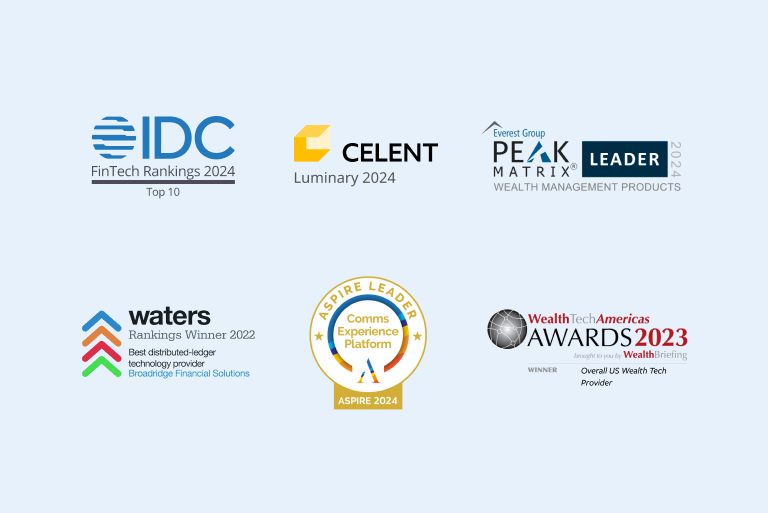Close
Additional Broadridge resources:
View our Contact Us page for additional information.
One of our sales representatives will email you about your submission.
Welcome back, {firstName lastName}.
Not {firstName}? Clear the form.
Want to speak with a sales representative?
Your sales rep submission has been received. One of our sales representatives will contact you soon.
Our representatives and specialists are ready with the solutions you need to advance your business.
Want to speak with a sales representative?
| Table Heading | |
|---|---|
| +1 800 353 0103 | North America |
| +442075513000 | EMEA |
| +65 6438 1144 | APAC |
Your sales rep submission has been received. One of our sales representatives will contact you soon.
Want to speak with a sales representative?
| Table Heading | |
|---|---|
| +1 800 353 0103 | North America |
| +442075513000 | EMEA |
| +65 6438 1144 | APAC |
AI is paving the way for enhanced efficiency and decision-making in private markets
Explore how
Transform your business and prepare for what’s next with technology, insights and critical infrastructure from the experts at Broadridge.
Choose a key topic and we'll guide you to the right solution.
Choose a subcategory to start exploring our Portfolio Management solutions.
Go backChoose a subcategory to start exploring our Communication Strategy solutions.
Go backChoose a subcategory to start exploring our Corporate Issuer solutions.
Go backChoose a subcategory to start exploring our Operational Efficiency solutions.
Go backUnderstand risk and enhance accuracy across the entire trade life cycle.
Solutions
Unleash innovation to deliver a relevant and engaging advisor and client experience.
Solutions
Generate alpha, drive growth and strengthen client relationships.
Solutions
Streamline communications and simplify shareholder management.
Solutions
We maintain a network of business operations in office locations throughout the world to help meet the needs of our clients.
Our representatives and specialists are ready with the solutions you need to advance your business.
Request informationFor helpful resources you can visit:
For general inquiries and international office locations:
Our representatives and specialists are ready with the solutions you need to advance your business.
Want to speak with a sales representative?
| Table Heading | |
|---|---|
| +1 800 353 0103 | North America |
| +442075513000 | EMEA |
| +65 6438 1144 | APAC |
Your sales rep submission has been received. One of our sales representatives will contact you soon.
Want to speak with a sales representative?
| Table Heading | |
|---|---|
| +1 800 353 0103 | North America |
| +442075513000 | EMEA |
| +65 6438 1144 | APAC |







